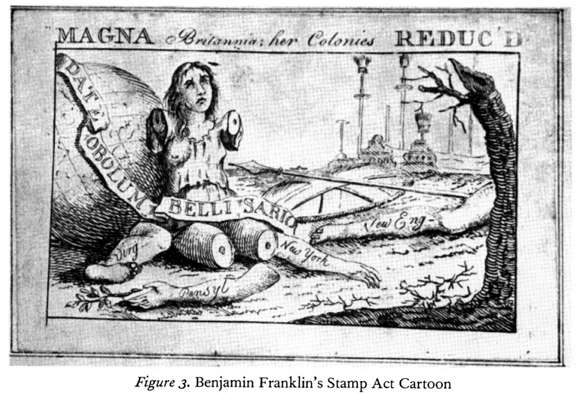"Give Poor Belisarius a Penny."

The above (c. 1766) is of (symbolic) England with the colonies cut off. It was in response to the Stamp Act (seen as unfair taxation.)
It was explained (in 1766 by Ben Franklin) this way:
The ordaining of laws in favor of one part of the nation, to the prejudice and oppression of another, is certainly the most erroneous and mistaken policy. An equal dispensation of protection, rights, privileges, and advantages, is what every part is entitled to, and ought to enjoy; it being a matter of no moment to the state, whether a subject grows rich and flourishing on the Thames or the Ohio, in Edinburgh or Dublin. These measures never fail to create great and violent jealousies and animosities between the people favored and the people oppressed: whence a total separation of affections, interests, political obligations, and all manner of connections, necessarily ensue, by which the whole state is weakened, and perhaps ruined for ever! - Benjamin Franklin, Emblematical Representations
In other words, Great Britain (seen as rich) was taxing the colonies (considered by the colonists as much poorer) and the depiction was stirring for revolution.
It was tantamount to saying "Give poor Great Britain a penny", where GB is pictured in a much reduced state (off her globe, unable to weild her sheild, lance or olive branch, in pieces with a lance pointed at her breast) like Bellisarius was in the end.
Is it common? Not at all. But it would be familiar to those studying American History and the founding fathers.

